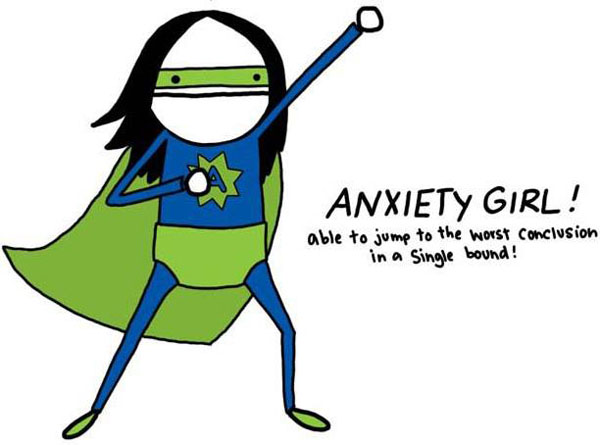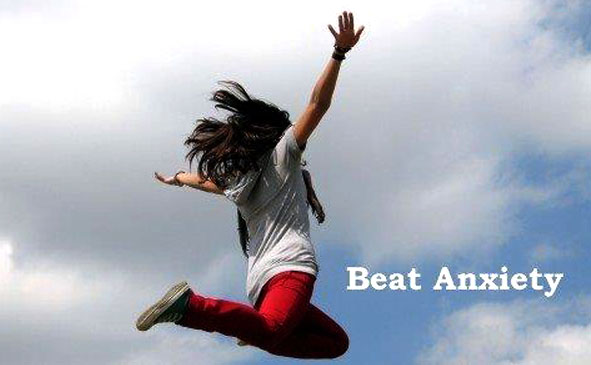3 Keys to Anxiety
“Anxiety’s like a rocking chair. It gives you something to do, but it doesn’t get you very far.”
– Jodi Picoult, Writer
Here’s the bad news: Anxiety is everywhere.
Here’s the good news: Everyone handles it successfully, almost all the time. Usually, while we’re watching and don’t even know it.
Are we talking about every day anxiety as described by the Australian Psychological Society? “Feelings of worry, nervousness, or a sense of apprehension, typically about an upcoming event where the outcome is uncertain, or where the person feels he or she might not be up to the task?” They note many, daily situations which can provoke the common “physical sensations such as a churning stomach, light headedness, and a racing heart” (2016).
Or are we talking about Generalized Anxiety Disorder (GAD), which, according to the Anxiety and Depression Society of America (2016) “is characterized by persistent, excessive, and unrealistic worry about everyday things… experience excessive anxiety and worry, often expecting the worst even when there is no apparent reason for concern…when a person finds it difficult to control worry on more days than not for at least six months?”
Though GAD affects 6.8 US million adults (ADAA, 2016) we are all affected by anxiety, so we are talking about both. As with the Three Keys to Depression article, this article’s focus isn’t on a disorder, or a diagnosis, it’s on living well. Living beyond.
This article offers three key components of managing anxiety, which can work from the everyday to the extreme. If you’re concerned that your anxiety, or that of someone in your life, may be closer to GAD, that’s a decision to make personally, with the help of a licensed professional. Please consider that “Whilst there is no single known cause of anxiety disorders,” The Australian Psychological Society (2016) said—actually using the word “whilst”—“there are a number of risk factors or triggers that…may play a role.
Genes: certain anxiety disorders appear to have a genetic component, with some anxiety disorders running in families.
Physical health: Poor physical health can increase a person’s vulnerability to developing symptoms of anxiety.
Thinking style: patterns of thinking characterized by anticipating the worst, persistent negative self-talk, low self-esteem, and unhelpful coping strategies (e.g., avoidance) are linked to problem anxiety.
Stress: stressful events such as a marriage breakdown, work or school deadlines, financial hardship can act as a trigger for anxiety.”
If we notice these risk factors then we already have some control. We cannot control our genes, our past experiences or our current struggles. We can always control how we handle them.
Control is Key
“Don’t let your mind bully your body into believing it must carry the burden of its worries.”
– Astrid Alauda
No matter our level of anxiety, the root is the same; feeling out of control or incapable. Anxiety affects us mentally, physically and emotionally. Each one of those is a key point where we can take control back the control of our thoughts, feelings and body.
Over my years as a counselor, I’ve helped many people develop their own mental, physical and emotional methods to cope with their anxiety symptoms, and I’ve developed my own as a person who lives in our stressful world. Interestingly, though we always broke down the skills into physical, mental in emotional, I just realized that this wasn’t a unique breakdown. Dr. Alice Boyes does the same thing in The Anxiety Toolkit and offers 50 splendid strategies, free in her Psychology Today article (Boyes, 2015).
I’ll share six from her list, and some of my own favorites, but please, check out her full article and book.
Physical
My favorites for physical are breathing techniques, muscle relaxation and exercise. Yes, they’re the tried-and-true, but that’s for a reason. Not only do they work, but they’re documented by years and literal tons of paper data. Plus, you can make them fun! Any breathing from “Smell the cookies, now blow out the Birthday candles” to the deepest Zen Yoga complex method does the same thing—exerts control and floods the body with calming oxygen. Muscle relaxation can be used with any muscle in your body at any time. Some I enjoy are the Wave “picture a wave flowing from your toes to your nose, and tense everything the wave slowly touches, then release” or “just squeeze your belly muscle, now your butt muscle.” Both can be done anywhere with no one noticing, exert control and re-focus body and mind, one makes kids (and adults) laugh.
Dr. Boyes offers two scientifically-based awesome ones. “Massage your hand, which will activate oxytocin. Lightly run one or two fingers over your lips. This will stimulate the parasympathetic fibers in your lips and you’ll feel calmer” (2015). So smart.
Mental
For mental calmness, “put something that’s out of place in its place. Physical order often helps us feel a sense of mental order,” Dr. Boyes (2015) wrote, “Take a break from actively working on solving a problem and allow your mind to keep processing the problem in the background.” This is something that I do myself, weather stressed by a project or working on a short story.
I often suggest journaling, but in a focused way instead of just writing down our worries. Take a sheet of paper and divide it into three columns. Column one is for worries, column two is for the strengths or skills to beat the worries—or the place to note if the worry isn’t realistic—and column three is for things we’re grateful for in life regardless of the worries. Fill in one column completely before moving on, starting from the worries to the gratitude. Not only does it distract the mind, but it grounds the worries, applies strengths and refocuses us on our bigger, positive picture.
Emotional
Emotional calm can be one of the most difficult to achieve if we focus on not feeling anxious. So don’t. Focus on any other feeling. Send an email that’s been too long awaiting a response, finish a task or exercise to feel accomplished. Find a friend or a web joke to bring a laugh. Listening to rockin’ music is awesome for showing the anxiety that it isn’t the boss of what we feel. The truth is, it’s really hard to focus on more than one feeling at a time, so the more we seek out positive feelings in healthy ways, the less anxious we feel.
Dr. Boyes (2015) encourages us to “accept that there is a gap between your real self and your ideal self” because “this is the case for pretty much everybody.” To settle that feeling of panic, she suggests to give yourself permission to “do a task 25% more slowly than usual. Allow yourself to savor not rushing.” That statement “savor not rushing” is so rare in our culture, but so inviting.
Unlocking Ourselves
“Every day brings a choice: to practice stress or to practice peace.”
– Joan Borysenko, Author and Speaker
The Anxiety and Depression Association of America noted that people with GAD hold jobs, have families, make great and powerful impact in the world every day (2016). They live beyond. Most people in their lives never even know that their anxiety needs managing. I believe the reason most people don’t realize the anxiety management in others is because we’re too busy managing our own.
Dr. Boyes (2015) offers the 50 strategies to beat anxiety because—first and foremost—anxiety is beatable! Second, is because our daily strategies are so personal that we all come up with hundreds of ways to beat it. That cup of coffee or tea at work “just to have something to do” is management. That air freshener which always brings a smile is management. The organizational system of our desks. The mourning routine and evening rituals. We all feel stress and anxiety, we all find ways to live beyond.
__________________________________________________
Anxiety and Depression Association of America (2016) Understand the Facts. Retrieved from: http://www.adaa.org/node/6
Australian Psychological Society (2016) Understanding and managing anxiety. Retrieved From: http://www.psychology.org.au/publications/tip_sheets/anxiety/
Boyes, A. (2015) 50 Strategies to Beat Anxiety. Psychology Today. Retrieved from https://www.psychologytoday.com/blog/in-practice/201503/50-strategies-beat-anxiety



